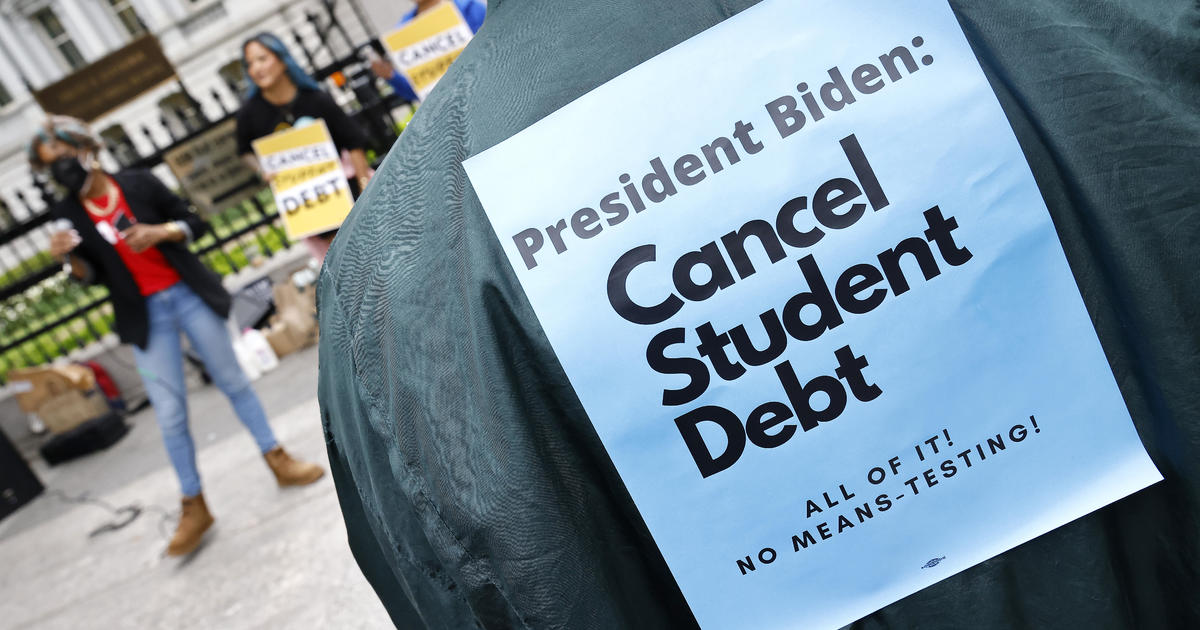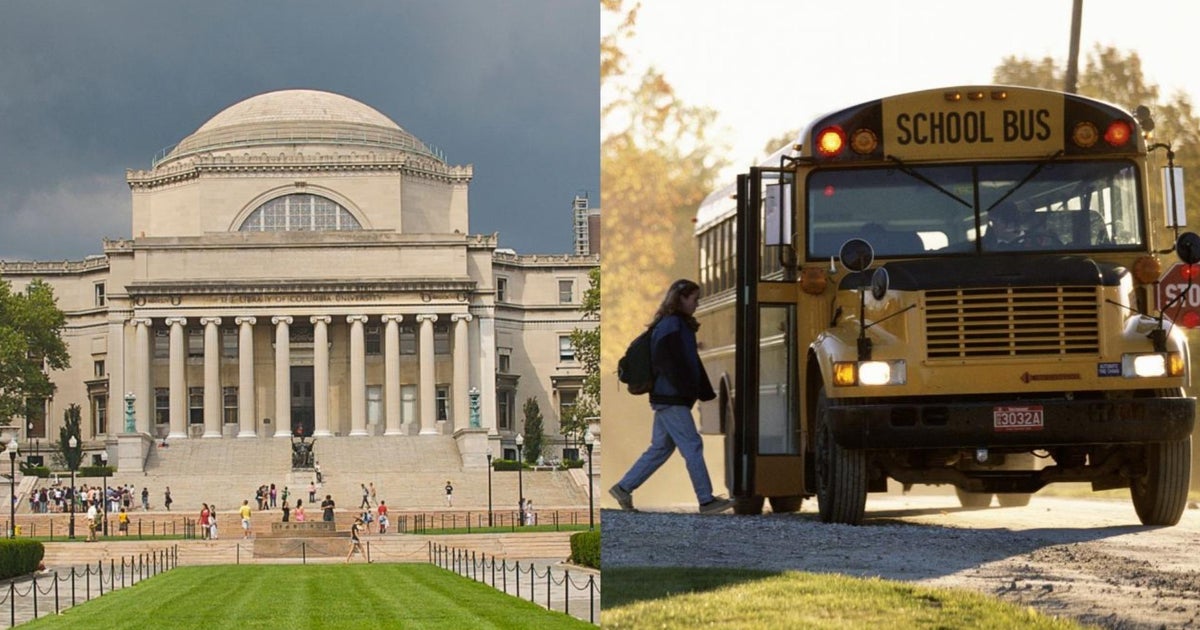CBS News
Attendees of 1 in 4 higher education programs earn less than high school grads, study finds

Americans are increasingly skeptical of the value of a post-secondary education at a time when college attendance costs are soaring. In some cases, those doubts may be justified, according to a new analysis of earnings data from almost 4,000 colleges and other higher education programs.
A decade after enrolling, attendees of 1 in 4 higher education programs are earning less than the median annual income of $32,000 for high school graduates, according to The HEA Group, which analyzed data from the Department of Education to track the earnings outcomes of about five million students.
About 8% of institutions show their students’ median income a decade after enrolling is less than $22,000 a year, or about 150% of the federal poverty line — low enough to qualify for some public assistance programs, The HEA Group found.
To be sure, the majority of colleges are producing graduates who outearn people with only high school degrees, and economic research points to a well-documented wage premium for college grads that only grows over time. But the findings may help explain the growing pessimism among Americans about whether a college degree justifies taking on student debt, which currently tops $37,000 per borrower.
“The main reason why students go to college is for greater employability and for a financially secure future,” Michael Michael Itzkowitz, the former director of the Department of Education’s College Scorecard and the founder of The HEA Group, told CBS MoneyWatch.
He added, “As you think about the student debt problem, this raises questions. Are colleges providing enough of a value to allow students to earn a decent living and pay down their student loans after they attend?”
About 56% of Americans now believe that earning a four-year college degree isn’t worth the cost, compared with 40% a decade ago, according to a poll last year from the Wall Street Journal and NORC at the University of Chicago.
In addition to the soaring cost of college, the 64% graduation rate at colleges granting 4-year degrees means some students are leaving in debt but without a degree hindering them from enjoying the college wage premium. The HEA Group’s income data covers all higher education attendees, including both those who graduated and those who dropped out.
Dropouts are “three times as likely to default on their student loans as other students,” Itzkowitz said. “It’s often because they haven’t earned their credentials, yet they have taken on debt, which becomes unmanageable.”
Where post-secondary degrees may not pay off
Many of the colleges with post-secondary programs whose attendees earn less than high school grads are for-profit institutions or trade schools offering certificates in cosmetology and other vocational programs. Some are also community colleges, religious institutions and arts programs offering bachelor’s degrees.
“What we can see is that many of them are short-term, often times for-profit institutions that show the majority of their students earning less than at the typical high school student,” Itzkowitz said.
Certificate programs are an important avenue for students to obtain a post-secondary degree, and in the right circumstances can lead to higher earnings, he added. “They allow students to pay only one year of tuition to gain a skill and enter the workforce immediately,” he said, “but they are often the riskiest programs in the U.S.”
The lowest-earning institution is Searcy Beauty College in Searcy, Arkansas, whose attendees earn median income of about $11,300 per year a decade after enrolling, compared with median annual pay of $32,000 for high school grads, the HEA analysis found. The school’s cosmetology course costs $16,000, its website shows. Searcy Beauty College didn’t immediately return a request for comment.
The colleges that pay off
To be sure, attendees of about 2,800 U.S. colleges and other post-secondary institutions earn more than high school grads, the analysis found. But some grads may come out only slightly ahead, with attendees of about 90 institutions earning between $32,000 to $33,000 annually a decade after enrollment — just a hair higher than the $32,000 median income for high school grads.
Examining earnings data for a program’s attendees, as well as graduation rates, can help inform students and their parents about whether a degree will pay off long-term, Itzkowitz said.
And many public state universities and colleges provide excellent value, helping to juice their graduates’ incomes at an affordable price. Take Baruch College of the City University of New York (CUNY), a public institution. Its grads earn about $71,000 per year a decade after they attend — on the same order as well-regarded private colleges such as Scripps College and Wesleyan, the study found.
Baruch’s annual tuition cost is about $5,000 annually, compared with about $62,000 a year for tuition at Scripps.
At the top end of the spectrum, Ivy League colleges and other highly ranked schools produce the best incomes for their attendees, the study found. Attendees of Samuel Merritt University, a health care-focused institution, have the highest incomes, at $129,442 a decade later, while STEM-focused MIT is close behind with $124,213 in median annual earnings.
University of Pennsylvania’s attendees are the highest paid of the Ivy League, at $112,761 a decade later, the study found. But Itzkowitz noted that the Ivy League colleges are so exclusive that they educate just a “small sliver” of America’s students.
“There are so many colleges beyond the Ivy Leagues that provide good outcomes for their graduates at affordable prices,” he noted. “The larger public colleges across the U.S. enroll the vast majority of students and provide good outcomes at an affordable cost.”
CBS News
11/16: Saturday Morning – CBS News

Watch CBS News
Be the first to know
Get browser notifications for breaking news, live events, and exclusive reporting.
CBS News
McDonald’s investing $100 million to lure customers back to the fast food giant after E. coli outbreak

McDonald’s is investing $100 million to bring customers back to stores after an outbreak of E. coli food poisoning tied to onions on the fast-food giant’s Quarter Pounder hamburgers.
The investments include $65 million that will go directly to the hardest-hit franchises, the company said.
The U.S. Centers for Disease Control and Prevention has said that slivered onions on the Quarter Pounders were the likely source of the E. coli. Taylor Farms in California recalled onions potentially linked to the outbreak.
The E. coli outbreak has sickened 104 people in 14 states, federal health officials said in an update on Wednesday.
At least 34 people have been hospitalized, and four developed hemolytic uremic syndrome (HUS), a serious condition that can cause kidney failure. An 88-year-old man who resided in Grand Junction, Colorado, died, as previously reported. The illnesses began at the end of September, and the most recent onset of illness occurred as of Oct. 21, according to the U.S. Food and Drug Administration.
The Food and Drug Administration has said that “there does not appear to be a continued food safety concern related to this outbreak at McDonald’s restaurants.”
However, the outbreak hurt the company’s sales.
Quarter Pounders were removed from menus in several states in the early days of the outbreak.
In a statement Wednesday obtained by CBS News, McDonald’s said it had found an “alternate supplier” for the approximately 900 restaurants that had temporarily stopped serving Quarter Pounders with slivered onions.
“Over the past week, these restaurants resumed the sale of Quarter Pounder burgers with slivered onions,” McDonald’s said.
CBS News reached out to McDonald’s on Saturday for a statement regarding the reported investment.
CBS News
U.S. health officials report 1st case of new form of mpox in a traveler

Health officials said Saturday they have confirmed the first U.S. case of a new form of mpox that was first seen in eastern Congo.
The person had traveled to eastern Africa and was treated in Northern California upon return, according to the California Department of Public Health. Symptoms are improving and the risk to the public is low.
Mpox is a rare disease caused by infection with a virus that’s in the same family as the one that causes smallpox. It is endemic in parts of Africa, where people have been infected through bites from rodents or small animals.
Earlier this year, scientists reported the emergence of a new form of mpox in Africa that was spread through close contact including through sex.
More than 3,100 confirmed cases have been reported just since late September, according to the World Health Organization. The vast majority of them have been in three African countries – Burundi, Uganda, and the Democratic Republic of the Congo.
Since then, cases of travelers with the new mpox form have been reported in Germany, India, Kenya, Sweden, Thailand, Zimbabwe, and the United Kingdom.
Health officials earlier this month said the situation in Congo appears to be stabilizing. The Africa Centers for Disease Control and Prevention has estimated Congo needs at least 3 million mpox vaccines to stop the spread, and another 7 million vaccines for the rest of Africa.
The current outbreak is different from the 2022 global outbreak of mpox where gay and bisexual men made up the vast majority of cases.









